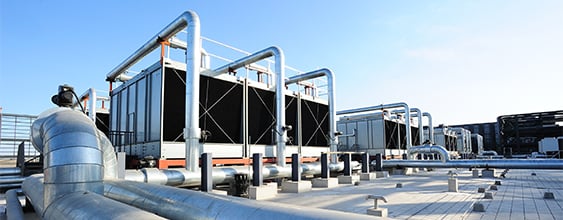Excessive heat exposure has many potential socioeconomic impacts for individuals and organizations, including loss of labour productivity, negative physical and mental health effects, and even higher death rates. Research has found that even acclimatized heat-exposed workers need to increase the proportion of rest by 10 to 40 minutes per hour of active work to avoid injury in excessively warm conditions (greater than 25.5 °C to 32.2 °C, depending on work intensity). In Quebec, it was found that increased compensation claims for occupational injuries are significantly linked to heat exposure. In Canada, both federal and provincial governments have modified heat exposure recommendations according to the most up-to-date physiological information to prevent health problems. However, excessive heat exposure can still alter the economic development of individual countries by affecting their gross domestic product (GDP). These heat-related threats to health and productivity are especially true as global temperatures climb.
Canada is still in a good position
Models find a ~2-4% annual loss of labour productivity in the future, measured as a percent of total GDP per unit of trillion tonne of carbon emitted. This effect represents an economic loss of about 0.59 $/tCO2). However, economic sectors are impacted by heat exposure differently. Productivity losses might be greater in urban areas compared to rural areas. Sectors in which workers mainly perform outdoor duties are more at risk to see their sector growth limited by rising temperatures. These high-risk sectors include - but may not be limited to - agriculture, mining and quarrying, manufacturing and construction.
Low-income countries, following the terminology of the World Bank, more strongly depend on these outdoor activities compared to high-income countries, generating 73% of their output in the identified high-risk sectors, compared to 30% for high-income countries. These low-income nations are generally also the countries that are and will be the most exposed to several other substantial challenges related to climate change, such as destructive sea level rise, high rates of population growth and fragile food security.
Some tropical countries already suffer from a 3 to 7 % productivity loss due to heat in a context where adaptation strategies are difficult to implement. As a high-income country with a mostly temperate climate, Canada has some climate-resilience advantages compared to other regions of the globe. However, Canada will face challenges, including productivity losses related to heat exposure estimated at 0.5 % of our GDP. When simply calculated, that 0.5 % comes out to about $9 billion CAD.
Additionally, some consequences of climate change in Canada will increase the frequency of dangerous, pre-existing conditions and the emergence of more dangerous conditions, especially along the southern band of Canada where most of the country’s economic activities are developed. Here are four strategic and complementary strategies to implement relevant adaptation options, optimize well-being of workers, and maximize productivity in Canada as temperatures increase.
Four complementary strategies for efficient adaptation to rising temperatures
1. Consider all heat-related factors
Heat exposure does not only depend on ambient temperature. Humidity, solar irradiation, dehydration and inappropriate clothing tends to emphasize the related risks of heat exposure, while factors such as wind and shade reduce the risks. Specific measures to regulate these parameters, such as the construction of shading areas, air-conditioning and ventilation facilities, the regular supply of water and an appropriate design for required uniforms can be made available to all risk-exposed workers to reduce the potential health consequences of excessive heat.
2. Redistribute working hours
Companies can find ways to adapt to increasing heat exposure by redistributing the workforce to job positions that are less vulnerable to temperature extremes or shifting working hours to seasons or times of day when heat exposure is lower. In a similar manner, short-term adaptation measures can be implemented and work conditions can be adjusted to maximize worker outputs over a shorter time.
3. Educate
Companies are responsible for their workers, and everyone should be aware of the climate risks to which they are exposed. Here, the focus is on awareness and training. Staff training should include information about the broad measures to prevent and protect against weather-related hazards, including heat exposure. Further, multiple factors affect how people experience heat; a work culture that promotes adaptation and wellness is crucial to keeping everyone healthy and productive.
4. Comply with health recommendations as a minimum
Health recommendations for the protection against heat exposure are publicly available and are updated on a regular basis. If the recommendations are closely followed and employers keep pace with adapting as temperatures rise, the cost incurred by work-related injuries due to heat will be significantly reduced, and business performances and the well-being of workers should be maximized.
|
With climate projections for specific locations, WSP can provide professional advice on adaptation planning for workers in the extreme weather conditions expected in the future. Climate change expertise within WSP offers an opportunity for the development of strong solutions to manage heat exposure, minimize productivity loss, and maximize worker wellness.














